 Most viewed - KYOTO 京都府 Most viewed - KYOTO 京都府 |

I was a few days too late to see the peak. Will return again in autumn.61 views
|
|

61 views
|
|

61 views
|
|

61 views
|
|

61 views
|
|

61 views
|
|

Empty hangar for a steam locomotive.61 views
|
|

61 views
|
|

Back to the Promenade area near the entrance with the 0 Series shinkansen.61 views
|
|

80 series EMU car KuHa 86001 61 views
|
|

Sleeper train61 views
|
|

61 views
|
|

61 views
|
|

61 views
|
|

61 views
|
|

"Twilight Express" Sleeper train for Sapporo61 views
|
|

61 views
|
|

61 views
|
|

61 views
|
|

61 views
|
|

At the Sanmon Gate, pay the admission to enter the temple. It's a very interesting temple, but they don't really have English explanations.61 views
|
|

From Sanmon Gate, path to Tennoden Hall. The path is modeled after dragon scales.61 views
|
|

61 views
|
|

61 views
|
|

61 views
|
|

Daiohoden Hall roof.61 views
|
|

Daiohoden Hall also has statues of the Eighteen Arhats. 十八羅漢像61 viewsThey are the original followers of the Buddha who have reached the state of Nirvana and are free of worldly desires.
|
|

61 views
|
|

61 views
|
|

Manpukuji's famous wooden fish board used like a gong to indicate the time. 魚梆61 views
|
|

"Obaku-san Fucha Ryori" bento-type (box lunch) fucha ryori for our large tour group. It costs around ¥3,000.61 views
|
|

Near the Sanmon Gate is this entrance to Icho-an restaurant. 銀杏庵61 views
|
|

Fucha ryori became very popular after it was first introduced in Japan. No wonder. It looks exotic and tastes absolutely delicious. Salad.61 views
|
|

61 views
|
|

61 views
|
|
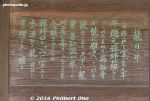
61 views
|
|

Chotaro Horii is the 6th-generation owner/operator of Horii Shichimeien which was originally Okunoyama Chaen (奥ノ山茶園), one of Uji's Seven Reknown Tea Fields (七名園).61 views
|
|

This is the symbol of Tofukuji temple, a bridge named Tsutenkyo (通天橋) that goes across this mass of red Japanese maple trees. You see this photo in all the Kyoto travel brochures.61 views
|
|
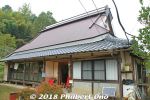
This is the main lodge where the kitchen, dining, and bath facilities are. It also has one guest room with twin beds. It is a traditional farmhouse with a thatched roof protected by a corrugated tin.61 viewsFarm house in Ayabe, Kyoto Prefecture.
|
|

Company president Tamiya Kyoji answered our many questions about this amazing kimono. 61 viewsHis father Tamiya Katsuichiro took two years to develop and invent a method to inlay shell pieces in fabrics and showed their first example on a kimono obi sash in 1977.
|
|
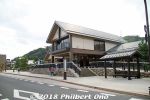
Amanohashidate Station (Kyoto Tango Railway, nicknamed "Tantetsu" or "Willer Trains") is close to Amanohashidate sandbar. Trains from JR Osaka, Kyoto, and Fukuchiyama Stations stop here.61 views
|
|
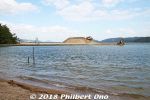
Amanohashidate's finger of sand that keeps growing. Every few years, they have to remove the excess sand, otherwise it will become another sandbar impeding shipping.61 views
|
|

About Amanohashidate's pine trees.61 views
|
|
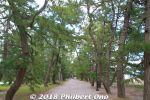
Cycling on Amanohashidate through thousands of Japanese pine trees. It takes 10-15 min. by bicycle without stopping. But there are a number of monuments, shrine, commemorative pine trees, and beaches to photograph along the way. So it took me 30-40 min.61 views
|
|
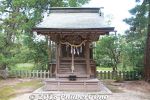
Amanohashidate Shrine61 views
|
|
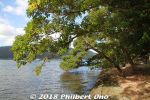
West side of Amanohashidate.61 views
|
|
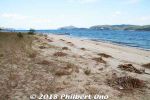
This part of the beach had many little piles of driftwood which they were cleaning up.61 views
|
|
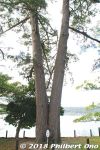
Wedded pine trees on Amanohashidate. (夫婦松) 61 views
|
|
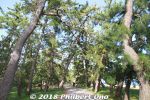
Don't ever get tired of the scenery.61 views
|
|
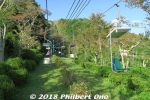
Chair lift to Kasamatsu Park. 61 views
|
|
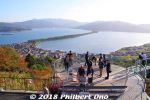
Amanohashidate as seen from the northern end atop Kasamatsu Park.61 viewsAmanohashidate is a sandbar created since thousands of years ago by opposing ocean currents carrying sand. According to Japanese mythology, Amanohashidate was created during the age of gods (before man appeared). The great god Izanagi in Heaven, built a long floating ladder-bridge from Heaven to Earth so he could see his wife the goddess Izanami who was living at Moto-Ise Kono Shrine on Earth. However, in a single night while he was asleep, the bridge collapsed and fell to Earth, where Amanohashidate is today. And so if you view it upside down at Kasamatsu Park, it's supposed to look like a bridge to heaven which is what "Amanohashidate" means.
|
|
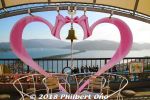
And so Amanohashidate symbolizes a link between Heaven and Earth and between two lovers. That's why you may also see heart or love symbols at Amanohashidate.61 views
|
|
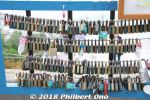
Padlocks for lovers.61 views
|
|
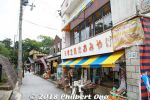
Path to nearby Moto-Ise Kono Shrine is lined with souvenir shops.61 views
|
|
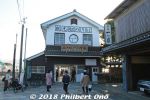
Boat dock on the northern end to cross by boat if you don't want to cycle.61 views
|
|
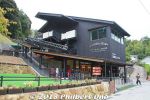
Chair lift and cable car station for Amanohashidate Viewland. Short walk from Amanohashidate Station.61 views
|
|
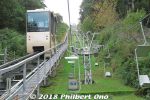
Chair lift and monorail car for Amanohashidate Viewland. Taking the chair lift is faster than the monorail car.61 views
|
|
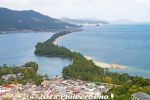
Amanohashidate as seen from the southern end atop Amanohashidate Viewland.61 views
|
|
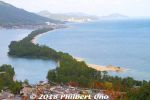
On the lower right of the sandbar, notice the finger of sand extending into the ocean. 61 viewsThis finger keeps growing as the northern sand erodes and drifts over to it. So every few years, they have to remove the excess sand. (Notice the power shovel and dump truck working on it.) Otherwise, this little sand spit will become another sandbar across the ocean, impeding local shipping.
|
|
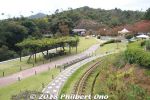
Amanohashidate Viewland's amusement park for kids.61 views
|
|
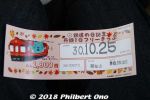
This Kyoto Tango Railways one-day train pass is a good deal.61 views
|
|
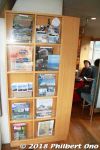
Enter the Aomatsu train and see this rack of tourist pamphlets.61 views
|
|
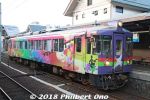
Amanohashidate area has all these neat, painted trains.61 views
|
|
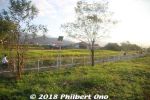
On the train back.61 views
|
|

Tenryuji temple's Kuri building.60 views
|
|
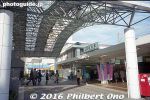
JR Yamashina Station60 views
|
|

60 views
|
|

60 views
|
|

Even the shape and placement of the trees are so artistic.60 views
|
|

Courtyard garden60 views
|
|

60 views
|
|

60 views
|
|

60 views
|
|

60 views
|
|

60 views
|
|

60 views
|
|

Bridge to Benten-shima on Hojo-ike Pond.60 views
|
|

Miei-do Hall in the distance.60 views
|
|

60 views
|
|

60 views
|
|

60 views
|
|

60 views
|
|

60 views
|
|

Old steam locomotive for the Imperial family.60 views
|
|

60 views
|
|

60 views
|
|

60 views
|
|

60 views
|
|

EF58 150 (left) and EF81 103 (right) locomotives for sleeper trains, Twilight Plaza Zone.60 views
|
|

EF58 150 (left) and EF81 103 (right) locomotives for sleeper trains, Twilight Plaza Zone.60 views
|
|

60 views
|
|

60 views
|
|

For train mechanics.60 views
|
|

60 views
|
|

Second floor of Kyoto Railway Museum60 views
|
|

60 views
|
|

Shinkansen traffic control center.60 views
|
|

Train nameplates put on the front of the train.60 views
|
|

60 views
|
|

60 views
|
|

Karahafu roof gable60 views
|
|

Manpukuji temple bell in a corridor.60 views
|
|

60 views
|
|
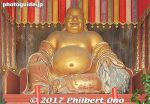
Inside Manpukuji's Tennoden Hall is Hotei, one of the Seven Gods of Good Fortune. 天王殿(てんのうでん)、弥勒菩薩(布袋)60 views
|
|

60 views
|
|

60 views
|
|

60 views
|
|

Round window at Daiohoden Hall.60 views
|
|

伽藍堂60 views
|
|

60 views
|
|

Manpukuji also has a subtemple and treasure house called Hozoin (宝蔵院) noted for storing tens of thousands of woodblocks that are still used for printing Buddhist scriptures.60 views
|
|

60 views
|
|

Tofukuji Temple, Kyoto60 views
|
|
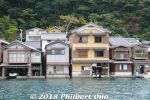
These boat houses are usually used as a second house for retired grandparents or for a young married couple who want some privacy (especially at night). Or it can be used as a workplace, a guesthouse, or paid lodging.60 views
|
|

Tango Peninsula in northern Kyoto Prefecture is scenic along the coast with a number of natural features and formations.60 viewsMuch of the coast is part of the San'in Kaigan Geopark (山陰海岸ジオパーク) that extends from the western half (Kyotango city) of Tango Peninsula to Tottori Prefecture. San'in Kaigan Geopark is also a UNESCO Global Geopark.
|
|
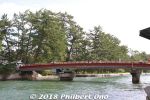
Rotating bridge for pedestrians again.60 views
|
|
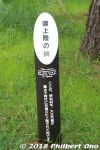
Marker for Emperor Taisho's visit. Anybody who is a somebody has visited Amanohashidate.60 views
|
|
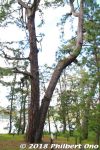
Looks like another wedded pair of pine trees, but it is named "Good Friends pine trees." なかよしの松60 views
|
|
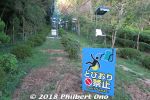
If you're not afraid of heights, take the chair lift. They keep telling you not to jump off even if you dropped something.60 views
|
|
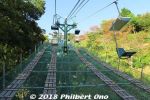
Chair lift to Kasamatsu Park. 60 views
|
|
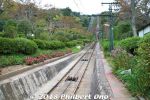
Cable car to Kasamatsu Park.60 views
|
|
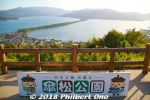
Amanohashidate as seen from the northern end atop Kasamatsu Park.60 views
|
|
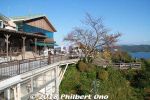
60 views
|
|
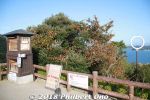
Another Ring of Wisdom on Kasamatsu Park.60 views
|
|
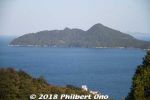
60 views
|
|
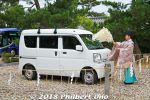
Lucky to see a shrine priest bless a vehicle for traffic safety.60 views
|
|
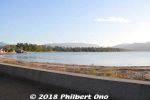
Amanohashidate60 views
|
|
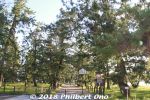
Entrance to Amanohashidate's northern end.60 views
|
|
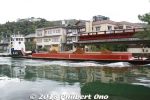
Ship coming through.60 views
|
|
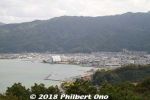
60 views
|
|
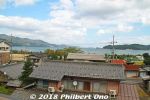
View from the Aomatsu train.60 viewsKyoto Tango Railway has another cafe train named "Akamatsu" that runs twice a day (except on Tue. and Wed.) between Nishi-Maizuru and Amanohashidate. But this train requires reservations.
https://trains.willer.co.jp/matsu/akamatsu.html
There's also the "Kuromatsu" restaurant train that runs on Fri., Sat., Sun., and national holidays. You can order a full dinner or confections or sake. The train fare includes the meal or drinks and obviously will be much more expensive than regular train fare.
https://trains.willer.co.jp/matsu/
|
|
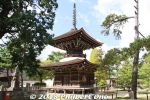
The elegant Tahoto Pagoda, a National Important Cultural Property. 多宝塔60 views
|
|
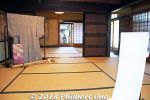
Inside the Former Bito Family Merchant's House (Kyu-Bitoke 旧尾藤家).60 views
|
|

59 views
|
|
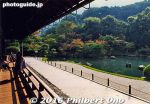
Tenryuji's Japanese garden.59 views
|
|

59 views
|
|

59 views
|
|

59 views
|
|

59 views
|
|

Amida-do Hall59 views
|
|

59 views
|
|

59 views
|
|

59 views
|
|

Gasen-do Hall59 views
|
|

Bridge to Benten-shima on Hojo-ike Pond.59 views
|
|

59 views
|
|

JPN Cafe59 views
|
|

59 views
|
|

59 views
|
|

First you see a semi-indoor display of a few trains.59 views
|
|

59 views
|
|

59 views
|
|

Cleaning a steam locomotive.59 views
|
|

Ride on a real steam locomotive for a low fare.59 views
|
|

59 views
|
|

59 views
|
|

Passenger car of the steam locomotive train.59 views
|
|

Steam locomotive repair shop.59 views
|
|

100 series shinkansen59 views
|
|

59 views
|
|

59 views
|
|

59 views
|
|

59 views
|
|

59 views
|
|

59 views
|
|

59 views
|
|

Chinese-style Somon Gate (Important Cultural Property), the first entrance to Manpukuji. It's a quite a large temple complex with numerous buildings. A few of the major buildings are open to the public. 総門(そうもん)59 views
|
|

Lotus pond in front of Sanmon Gate. 放生池59 views
|
|

From Sanmon Gate, path to Tennoden Hall. The path is modeled after dragon scales.59 views
|
|

59 views
|
|

59 views
|
|

Altar inside the Kaizan-do Hall.59 views
|
|

Kaizan-do Hall59 views
|
|

59 views
|
|

59 views
|
|

Altar inside Daiohoden Hall, Manpukuji's main temple. It worships a sitting Shaka Nyorai or Gautama Buddha. 大雄寶殿(だうおうほうでん)59 views
|
|

These mats on the floor are not for sitting. The priests stand behind the mats and chant.59 views
|
|

Bell tower (Important Cultural Property)59 views
|
|

Women cleaning the sliding lattice doors before repapering.59 views
|
|

59 views
|
|

Well59 views
|
|

Near their tea farm, Horii Shichimeien also has a tea shop selling some of Japan's finest tea.59 views
|
|

Behind Horii Shichimeien's tea shop is a small tea house for tea ceremony. Mr. Horii kindly prepares his finest marcha tea for us.59 views
|
|
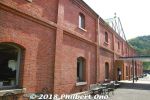
Opened in 2012, Maizuru Brick Park is a complex of 12 large brick buildings near the Japanese navy base. They were built from 1901 until the 1920s to store munitions (arsenal) for the Imperial Japanese Navy. 59 viewsEight of the buildings are National Important Cultural Properties and a few of them have been renovated and opened to the public. This is the first building you enter, the Maizuru World Brick Museum (赤れんが博物館).
Hours 9:00 am–5:00 pm, closed Dec. 29–Jan. 1. 15-min. walk from JR Higashi-Maizuru Station (JR Maizuru Line and Obama Line). Parking available.
Map: https://goo.gl/maps/ZuFd1eXrNds
|
|
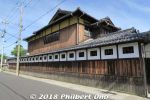
The ryokan's annex building was left unused and decrepit for many years and was on the verge of being torn down until a citizens group got together to clean, renovate, and preserve the building. 59 viewsThey finally decided to make it a Western-style restaurant serving navy cuisine. It just opened on Oct. 11, 2018. Glad that they preserved the building.
|
|
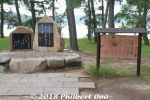
Amanohashidate poetry monument for famous travel poet Yosano Akiko and husband Yosano Tekkan. 与謝野 鉄幹(与謝野 寛)、与謝野 晶子59 views
|
|

About "Iso-shimizu" (磯清水).59 views
|
|
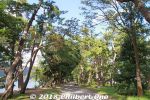
59 views
|
|
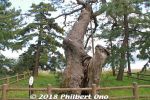
59 views
|
|
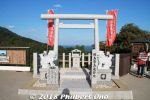
59 views
|
|
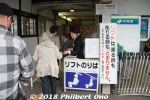
Entrance to chair lift to go down from Kasamatsu Park.59 views
|
|
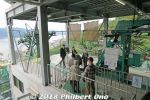
Chair lift to go down from Kasamatsu Park.59 views
|
|
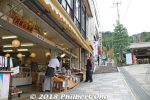
Souvenir shops near the chair lift station at Fuchu Station.59 views
|
|
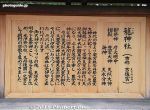
About Moto-Ise Kono Shrine (元伊勢籠神社). 59 viewsBefore Ise Jingu was established around the 7th century (or earlier), a number of shrines for these two deities were temporarily or permanently established in various locations including this Kono Shrine. These pre-Ise Jingu shrines are prefixed with "Moto-Ise." Kono Shrine worships five gods and one of them is Toyouke-Omikami (豊受大神), the same goddess of agriculture worshiped in Ise.
|
|
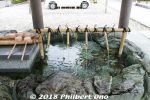
59 views
|
|
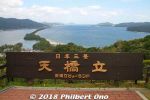
Amanohashidate from Amanohashidate Viewland (southern end).59 views
|
|
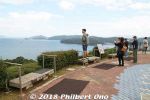
Platforms where you supposed to view the sandbar upside down. 59 views
|
|
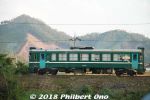
Kyoto Tango Railway (abbreviated as "Tantetsu") is the dominant train network in this area.59 views
|
|

Arashiyama is another major tourist spot in Kyoto with a river, bridge, boat rides, temples, cormorant fishing, and more. Saga-Arashiyama Station is one rail station near Arashiyama.58 views
|
|

Tenryuji temple58 views
|
|

Tenryuji temple is the main temple of one of the 15 branches of the Rinzai school of Zen Buddhism.58 views
|
|

58 views
|
|

58 views
|
|

58 views
|
|

Main entrance to the temple.58 views
|
|

58 views
|
|

Amida-do Hall58 views
|
|

They also had a rest area where they served tea and sweets amid the foliage. Brisk business.58 views
|
|

58 views
|
|

Friendly workers wave to passengers riding on the steam locomotive train.58 views
|
|

Blue Train dining car58 views
|
|

58 views
|
|

58 views
|
|

Inside kiosk.58 views
|
|

58 views
|
|

Showa-no-Eki Station platform.58 views
|
|

58 views
|
|

58 views
|
|

Farewell JNR in 1987.58 views
|
|

From Sanmon Gate, path to Tennoden Hall. The path is modeled after dragon scales.58 views
|
|

58 views
|
|

Statue behind the Hotei statue.58 views
|
|

58 views
|
|

Rear view of Daiohoden Hall.58 views
|
|

Rear view of Daiohoden Hall.58 views
|
|

Hatto Hall's bell-shaped window.58 views
|
|

Dessert. One of the best meals I ever had in Japan. Advance reservations are required. It's not a walk-in restaurant. More info photos in Japanese: https://www.obakusan.or.jp/eat/58 views
|
|

58 views
|
|

Woodblock for printing Buddhist scripture. Looks very worn out.58 views
|
|

"Curios" is an archaic term from the Meiji Period.58 views
|
|

Pine tree58 views
|
|

Inside Horii Shichimeien's tea factory.58 views
|
|
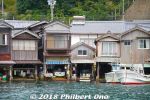
You may think these homes in Ine are sitting ducks for high waves, typhoons, high tides, etc. But they are in a sheltered bay facing south, away from the Sea of Japan. 58 viewsMountains shield the bay on three sides and a small island (Aoshima) on the bay's entrance acts like a breakwater. Ine Bay is largely untouched by the rough seas of the Sea of Japan and the water is very calm. Also, the ocean tide varies by only 50 cm at most. See Ine's location here: https://goo.gl/maps/sXVERESwvMT2
|
|
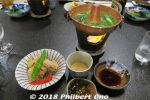
Shorenkan Yoshinoya ryokan is probably more famous for its food, especially crab during crab season (Nov. to March). 58 viewsBut it wasn't crab season when we were there so we didn't have any crab. But the food was still excellent. Kyotango, Kyoto Prefecture.
|
|
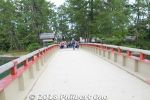
Rotating bridge for Amanohashidate.58 views
|
|
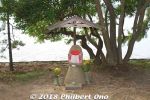
58 views
|
|
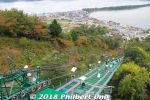
Chair lift to Kasamatsu Park. 58 views
|
|
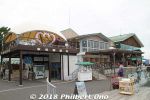
Kasamatsu Park has the usual touristy restaurants and shops. Nice benches and no amusement park.58 views
|
|

58 views
|
|
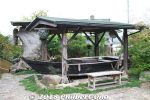
58 views
|
|
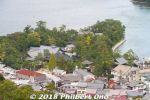
Chionji Temple58 views
|
|
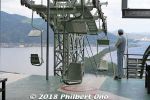
Chairlift down.58 views
|
|
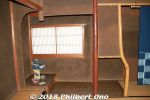
The Japanese-style first floor used very expensive materials. These thin wood pillars are shochikubai (matsu pine, bamboo, and ume plum tree).58 viewsFormer Bito family home, Yosano, Kyoto Prefecture.
|
|
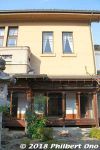
The first floor was Japanese style, while the second floor was Western-style (Spanish).58 viewsFormer Bito family home, Yosano, Kyoto Prefecture.
|
|

57 views
|
|

Everywhere you look in Eikando is so utterly photogenic, or should I say paint-genic since they didn’t have cameras when the temple was built. Everywhere looks like a scene from a classic Japanese painting.57 views
|
|

57 views
|
|

57 views
|
|

Courtyard garden seen from the Shaka-do Hall.57 views
|
|

Roof of the Mieei-do Hall.We were not allowed to photograph inside the temple buildings.57 views
|
|

57 views
|
|

Bridge to Benten-shima on Hojo-ike Pond.57 views
|
|
| 2715 files on 11 page(s) |
 |
 |
8 |  |
 |
|